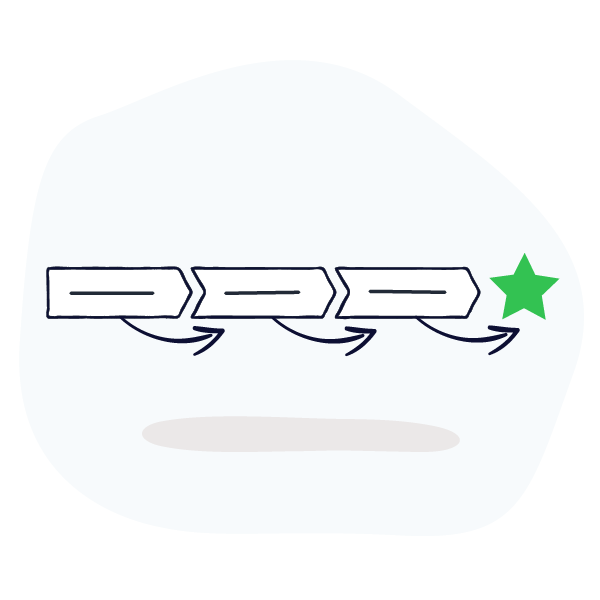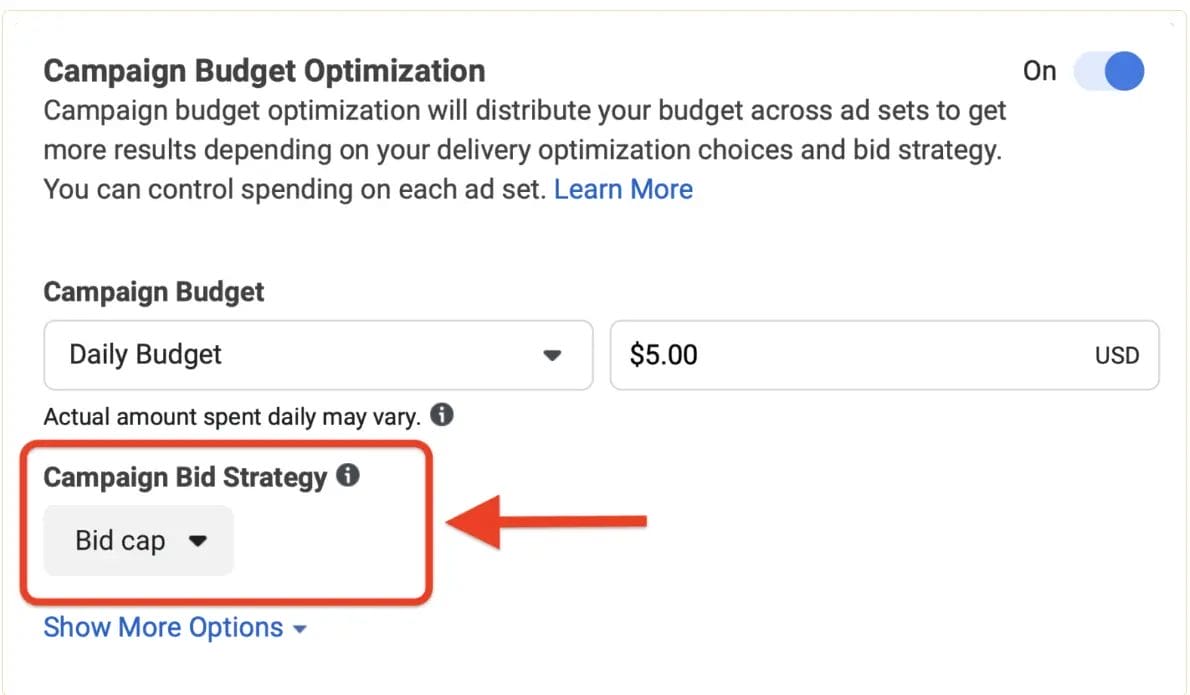What influences the cost?

“Nutshell is super user-friendly and intuitive

“I would highly recommend Nutshell

“Easy to use and... wait for it ... 100% buy in!

“Nutshell is both simple and powerful
Do you have a product or service that you think your target audience would be excited to buy? If so, you may want to leverage Facebook’s 2 billion-plus daily active users by investing in Facebook ads. But what does Facebook advertising actually cost, and how do you know you’ll be able to afford it?
The real cost of Facebook advertising depends on your goals, audience, and strategy—but most B2B marketers spend under $500/month, with average costs around $0.57 per click, $9.36 per 1,000 impressions (CPM), and under $5 per action. Smart targeting, high-quality creative, and careful bidding are key to keeping costs down and maximizing ROI.



Take our guided tour to explore Nutshell’s incredible features!

The cost of Facebook advertising depends on numerous factors, including your ad budget, industry, and promotional goals. In fact, the question you should be asking is how much a successful Facebook ad campaign in your industry or niche will cost.
The best approach is to examine other companies’ Facebook ad spending and engagement, particularly those that regularly advertise because you know it must work for them if they continue to do it. That said, the overall average Facebook ad cost per click is about $0.30.
This guide will provide the answers you seek by analyzing what businesses pay on average for Facebook ad clicks, impressions, likes, and downloads. We’ll also delve into the factors that influence Facebook advertising pricing and how you can maximize your ad success.
Before we dive into the average cost of Facebook ads, let’s examine the factors that determine your ad costs and what you can do to minimize ad spend.
One of the great things about advertising on Facebook is that it offers businesses tools to segment and target very specific audiences. Because Facebook has in-depth first-party data on all its users, you can zero in on your ideal customer’s exact demographics and interests. The cost of running social media ads on Facebook depends heavily on the audience you decide to target. Costs vary noticeably when targeting different genders, age groups, and interest groups. What you spend depends on how many Facebook users fit your profile—the more there are, the less expensive it becomes.

Image source: Sprout Social
Many advertisers target a fairly broad audience for maximum exposure, particularly when they start running ads. This strategy may work for some businesses but often results in a high number of impressions and a low number of clicks.
In other words, you’re left with a low click-through rate (CTR) and typically an even lower conversion rate. That means you’ve spent quite a bit for only a few sales or signups, making your cost per acquisition (CPA) relatively high.
Targeting a narrower audience that fits your ideal customer profile is often a safer bet. You may spend more per click, but you’ll likely see more of those clicks become conversions. Granted, this approach will cost you a bit more, but your return on investment (ROI) will be higher.
Facebook’s AI-powered Advantage+ Audience feature makes things easier. With it, you can select a slightly broader audience, and the AI will adapt audience targeting based on ad performance and past user behavior.
Placing an ad through Facebook opens the door to extending that ad placement to other platforms under the Meta umbrella. Where you choose to place your ad can impact your overall Facebook ad costs. You’ll have the option to place ads on the following platforms:

Image source: Social Media Examiner
Meta’s Audience Network comprises a long list of websites and apps within the Meta family, including WhatsApp. When you choose to place ads through the Audience Network, Facebook will allow you to review where your ads will appear.
Instagram offers the highest cost per click (CPC), at an average of about $0.80, while placing ads on the Audience Network will cost an extra $0.20 per click on average.
When placing your ad, you’ll have the option to enable Automatic Placements—a recommended feature. This allows Facebook to display your ad where it feels you’ll render the best results for your budget. You can always disable the feature for more control, but the onus will be on you and your team to determine where your ad will be most successful.
Ad quality can affect the cost of Facebook advertising, and the social media platform provides the tools to ensure that your ad quality is up to snuff. The consensus is that the higher your quality score, the lower your CPC.
There are specific areas Facebook considers when evaluating the quality of your ads:
It’s important to note that you’ll only see a score once Facebook has enough data to work with, typically 500 or more impressions or views. The platform will also adjust the score as your campaign progresses, so it’s best to check in on it regularly. When the score is visible, you’ll see one of the following:

Image source: Social Media Examiner
To ensure an optimal ad quality score, make sure your ads are relevant to your target audience, use quality video and images, include proper spelling and grammar, and don’t come across as clickbait.
Apart from stipulating your ad budget, you also have the option to dictate your bidding strategy. The bidding strategy you select lets Facebook know how to bid on your behalf in ad auctions—Facebook’s way of determining which ad to show to someone in your target audience.
The bid amount, predicted likelihood of engagement, and ad quality all play a part in determining the winning ad. Facebook offers three core bidding strategies to choose from, as follows:

Image source: Social Media Examiner
Facebook should display the estimated reach and clicks when setting up your bidding strategy. These are related to your chosen strategy and based on the quality of your ad and the information it provides about your target audience.
Keep an eye on your bidding and optimization report in your Meta Ads Manager account to see whether your bid strategy works or needs adjustments. Remember that changing strategies will reset the platform’s learning phase to enhance recommendations.
Invest in professional marketing services from WebFX and kick your company’s growth into high gear.
Global digital marketing agency WebFX recently conducted a survey to determine what marketers spend on Facebook advertising.
Of the 270 marketers interviewed, most (28.65%) averaged a monthly ad cost of between $101.00 and $500.00. 20.79% said they only spend around $51.00 to $100.00 per month. And more than half said they allocate 0 to 15% of their advertising budget to advertising on Facebook.
While these figures certainly offer some insight into how much Facebook ads cost, they don’t paint the full picture. To truly get to grips with Facebook advertising pricing, you must consider all the vital metrics.
Cost per click (CPC) indicates how much you spend for each click your ad receives. According to Revealbot, businesses spent an average of $0.57 per click in June 2024. However, you may pay more or less than that, depending on your industry and how much competition there is in your industry.
For instance, if your business is in the technology space, you could spend an average of $0.58 to $1.27 per click. Companies in the apparel and footwear industry could expect an average CPC of $0.30 to $0.45. Advertising during peak shopping seasons, such as Black Friday, Cyber Monday, and the Back-to-School season, will inevitably increase costs.
While these figures are only averages and may differ for your particular ad, business, and target audience, you can use them as a guide when planning your Facebook ad budget.
Your ad’s cost per thousand impressions (CPM) is the price you pay for 1,000 Facebook ad views by your target audience. Again, Revealbot offers us an overall median based on its studies, indicating that advertisers spent an average of $9.36 for 1,000 ad impressions in June 2024.
That said, your industry and ad campaign objectives will affect this cost. As an example, if your ad is part of a brand awareness campaign, your average CPM will likely be far less, often between $1.01 and $3.00. Lead generation campaigns tend to be the most costly when it comes to CPM.
Use your campaign insights and reports to monitor your ad’s CPM. If your CPM is above average but your CTR is low, it may be time to revisit your audience or bidding strategy.
Measuring your cost per action (CPA) means calculating how much you spend for each desired action that meets the ad objective. In other words, if your goal is to have your target audience sign up for your newsletter, the total Facebook PPC campaign cost divided by the number of newsletter sign-ups determines your CPA.
According to WebFX’s research, the majority of marketers (72%) spoken to paid between R0.00 and $5.00 per action. However, more than 2% said they spent over $10.00 per desired action. Your industry, budget, and ad quality all play a role in determining this figure. So, it’s best to monitor your average CPA throughout your campaign and make ad improvements and changes if you feel you’re paying too much.
Now that you know roughly what to expect from your upcoming Facebook lead ad campaign, let’s break down a few helpful Facebook ad tips for maximizing your ad spend.
A/B testing is every marketer’s friend and the cornerstone of ad optimization to ensure you get the most bang for your buck. Effective A/B testing takes patience and is most successful when you test one element of your ad at a time.
It’s best to create a duplicate of your original ad and make changes to only one of the following ad elements:
Run your A/B test over a stipulated period—at least a week—and stop running the ad that delivers the least favorable results at the end of that period. Then, run another A/B test focusing on a different element. Continual A/B testing will help you produce the best possible ad for your audience and increase your Facebook ad ROI.

Image source: Databox
Choosing to target an uber-niche audience or running your ad for an extended period may see your ad pop up often in your audience’s newsfeeds. This could lead to ad fatigue, leaving your audience somewhat unimpressed and weakening its conversion potential.
Luckily, Facebook gives your ad a frequency score to help you monitor how often audience members see your ad. It determines ad frequency by dividing the ad’s total impressions by its total reach.
Ideally, you’ll want an ad frequency score of one or two. If your score has risen above two or three, it’s time to refresh your ad content. This doesn’t necessarily mean redoing your entire ad, but a visual spruce-up could make all the difference.
Facebook provides advertisers with a host of tools to optimize ad performance, including lookalike audience targeting. This feature allows you to use your current customer data to find new customers with similar profiles.
You can set up a lookalike audience using data from previous Facebook ad campaigns, Facebook fans, or custom data from elsewhere. Meta encourages advertisers to choose 1,000 to 50,000 customers representing their ideal customer profile (ICP). It even lets you stipulate a specific audience size and countries to target when searching for a similar audience.
Keep tabs on your lookalike audience through the Meta Ads Manager system in the Audience Manager section.
Although we can determine an overall average cost for Facebook advertising related to specific metrics, your ad campaign expenses could be completely different.
As we’ve discovered, these costs depend on several integral factors, including your industry, ad goals, bidding strategy, target audience, and more. To get a true sense of what your Facebook lead ads will cost and ensure you maximize your ad potential and budget, it’s best to speak to a seasoned professional.
WebFX is one of the world’s best digital marketing agencies offering industry-leading paid social media advertising services backed by a stellar 28-year track record. With a team of over 500 digital experts, you know your social media ad campaigns are in good hands.Make sure your Facebook ad costs align with your budget, goals, and campaign results. Get your free WebFX proposal today for unmatched Facebook ad campaign success.
Let your sales team learn from the masters with our Sell to Win Playbook, packed with 55 top tips from some of the best sales experts around!
Table of Contents

Join 30,000+ other sales and marketing professionals. Subscribe to our Sell to Win newsletter!
